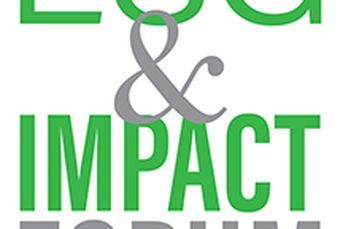Why portfolios are not one-size-fits-all
What is Vanguard’s best thinking regarding portfolio construction? https://s32566.pcdn.co/wp-content/uploads/assets/graphics src=”/wp-content/uploads2017/06/CI11066366.GIF” Daniel Wallace I am often…
What is Vanguard’s best thinking regarding portfolio construction?
I am often asked this question by investors trying to make sense of the myriad of choices before them. Who can blame them when they are faced with an ever-growing set of choices? Indeed, many investors whom I speak to want me to cut through the pages of analysis that our team of brilliant CFA® charterholders and Ph.D.s have painstakingly prepared and tell them the bottom line. However, discovering the right answer is not that easy.
Instead of making a suggestion, I often ask, What kind of car do you drive?
After some head scratching and quizzical looks from the audience, I explain that it’s highly likely that the questioner and I drive different cars. This is not because one vehicle make or model is necessarily better than another in any empirical way, but rather, we drive different cars because our needs or specific circumstances dictate different solutions. A mother with five children might require a minivan, whereas a couple of empty nesters might be able to get around in a two-seater convertible.
The same is true for investments. There is no one right answer; it depends on an investor’s particular situation. More specifically, for institutions, the right answer often depends on two key criteria: objective and investment approach.
The intersection of objectives and investment approaches
https://www.investmentnews.com//assets/graphics src=”/wp-content/uploads2017/06/CI11066566.PNG”
Note: The allocations in each pie chart are for illustrative purposes only and are not intended as specific recommendations. Any actual recommendations would be determined using investor-specific criteria.
Source: Vanguard
The chart above lays out the major choices for investors and outlines a framework to help find the solution that is best-suited for them. The objectives of institutional investors are listed by column and the investment approaches to achieve these objectives are listed by row, creating a matrix of potential solutions.
The top left-hand corner is a valuable starting point. Indeed, if I don’t know anything about an investor, I typically suggest a market-capitalization-based balanced portfolio. However, if an investor seeks to add value to his or her portfolio via different investment approaches—or has an objective other than total return—the portfolio will inevitably pivot off of this index-based, market-cap approach.
When focusing on a total-return objective, some investors may choose to maintain a long-term strategic tilt in their portfolios, for either outperformance or risk control purposes. For example, investors frequently implement static tilts when they exhibit a home country bias in their portfolios or elect to favor a certain market segment. Some investors may believe that additional alpha can be added to their portfolios through use of traditional active management. Under the right conditions—talent, cost, and patience —active management can achieve outperformance, which over time should compound into a significant benefit. Alternative investments can also be a useful addition to an institutional portfolio, depending on the investor’s characteristics and the nature of the investment.
Because Vanguard is widely recognized as an indexing expert, the recommendation that active investing can be a good fit for some investors may be surprising. But in reality, my reply to, What is Vanguard’s best thinking regarding portfolio construction? is nearly always, It depends. It depends on an investor’s objective and preferred investment approach. For readers interested in delving deeper into the topic, Vanguard’s white paper A framework for institutional portfolio construction does just that.
1 Daniel W. Wallick, Douglas M. Grim, Nathan Zahm, and Kevin Di Ciurcio, 2016. A framework for institutional portfolio construction. Valley Forge, Pa.: The Vanguard Group.
Note:
CFA® is a registered trademark owned by CFA Institute.
Daniel Wallick
Daniel Wallick is a principal in Vanguard Investment Strategy Group, where he develops solutions for institutional clients. His work on endowment- and foundation-related topics, including portfolio construction, alternative investments, and risk has been published extensively. Mr. Wallick was involved in establishing the Vanguard Capital Markets Model®, Vanguard Target Retirement Funds, and the company’s use of tender option bonds. He is also named in conjunction with a financial patent for work in connection with Vanguard Managed Payout Funds. Before joining Vanguard in 1998, Mr. Wallick worked in public finance, where he was responsible for the issuance of more than $10 billion worth of debt. He earned a B.A. in history from the University of Pennsylvania and an M.B.A. from Harvard University.
For more information about Vanguard funds or Vanguard ETFs, visit advisors.vanguard.com or call 800-997-2798 to obtain a prospectus or, if available, a summary prospectus. Investment objectives, risks, charges, expenses, and other important information are contained in the prospectus; read and consider it carefully before investing.
Vanguard ETF Shares are not redeemable with the issuing Fund other than in very large aggregations worth millions of dollars. Instead, investors must buy and sell Vanguard ETF Shares in the secondary market and hold those shares in a brokerage account. In doing so, the investor may incur brokerage commissions and may pay more than net asset value when buying and receive less than net asset value when selling.
Investments in bond funds are subject to interest rate, credit, and inflation risk.
Diversification does not ensure a profit or protect against a loss in a declining market.
Foreign investing involves additional risks including currency fluctuations and political uncertainty.
Stocks of companies in emerging markets are generally more risky than stocks of companies in developed countries.
All investing is subject to risk, including possible loss of principal.
Learn more about reprints and licensing for this article.






